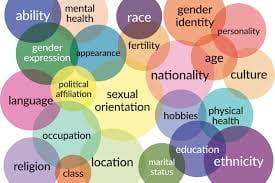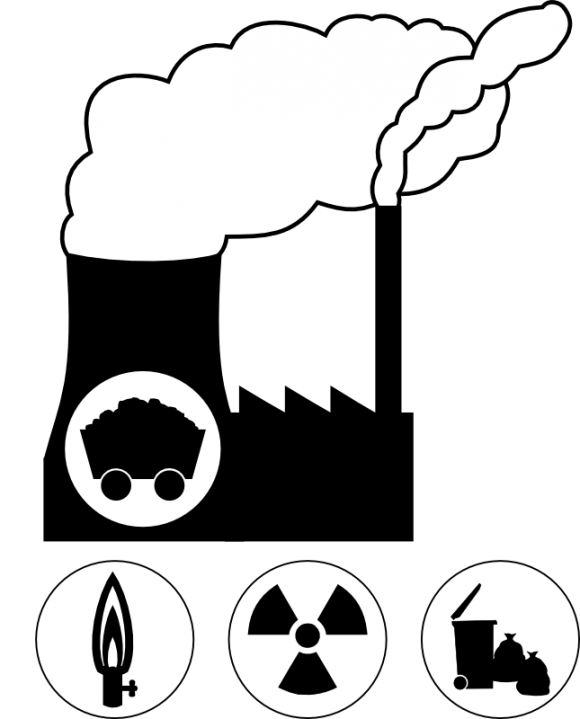If there’s one thing a Californian knows, it’s that there’s never enough water. For a state that is often lauded as a tourist destination — with the ability to surf and ski in one day being a major talking point for many a college trying to lure in unaware out-of-staters — it spends much of its time in drought or, as a result, on fire. The water shortage is what fuels the condescending letters from the water district about how much water you’re likely wasting and is what drives people to replace their front lawn with AstroTurf, scruffy native plants, and gravel, which, in my opinion, is a bridge too far. I mean, sure, it saves water and MWD will pay you to rip out your lawn and ruin your home’s curb appeal but… at what cost? I don’t care how many rock cairns and cactuses you use to try and spruce it up, walking around some neighborhoods still makes me feel like I’m the Curiosity rover exploring Mars.
From 2012 to 2016, California experienced its worst drought in over one thousand years (Xiao et al., 2017). It “caused billions of dollars in economic losses, killed millions of forest trees, brought several fish species closer to extinction, and caused inconvenience and some expense to millions of households and businesses” (Lund, Medellin-Azuara, Durand, & Stone, 2018, par. 1). It was, in short, a real bummer. During this time, citizens experienced a call to action to conserve water. They were encouraged to limit how often they watered their lawns or washed their cars and restrictions were placed on water runoff and overspray, hosing down driveways, and watering within two days after rain (Western Municipal Water District, n.d.). There was, however, one potential citizen action which was completely overlooked and largely went undiscussed. That is the consumption of beef. In California, it takes approximately 1621 gallons of water to produce 1 pound of beef, making it an important topic in the discussion about water conservation (Rijsberman, 2005).
While protein is an essential part of the human diet, Schlink, Nguyen, and Viljoen (2010) found that beef was significantly less water efficient than any other protein source they studied, including other animal proteins like eggs and poultry and plant proteins like soybeans. In fact, the beef industry accounts for 33% of the global water footprint of farm animal production, a number which is one and a half times higher than that of pigs and three times higher than that of broiler chickens (Mekonnen & Hoekstra, 2012). One of the primary reasons for this disparity is the amount of feed — which requires water to be grown — that beef cattle consume. For instance, beef cattle require four times more feed than pigs and eleven times more than broiler chickens for every pound of meat produced (Mekonnen & Hoekstra, 2012). However, to complicate things a bit, the use of concentrate feed in the chicken and pork industries does often result in a larger, negative impact on groundwater consumption and water pollution (Mekonnen & Hoekstra, 2012). While the beef industry uses, by far, the most water, that does not mean that other farm animal industries do not also have issues that they need to address.
It’s funny to me that, only a couple of years ago, the water districts, politicians, and the news industry were busy making me and other Californians feel bad about watering our lawns and washing our hair, and no one was talking about beef and the burden that a meat-based diet places on water scarcity. As shown by Hoekstra (2010), the shift from a meat-based diet to a largely vegetarian one could reduce an industrialized society’s water footprint by 36% (as cited in Gerbens-Leenes, Mekonnen, & Hoekstra, 2013). Additionally, Chapagain and James (2011) found that, for UK citizens, food waste accounts for 6% of their total water footprint (as cited in Gerbens-Leenes et al., 2013). Perhaps, as with many other industries like pharmaceuticals and tobacco, money is being placed above the well-being of both our citizens and our planet.
In the end, what this means is that, as usual, it really comes down to the individual to make a difference. First and foremost, it’s important to educate yourself and others on the realities of the beef industry. The importance of “educational campaigns lies in their priming ability; […] they get people ready to make a change rather than actually [getting] them to change” (Schneider et al., 2012, p. 307). From what I can tell, many people are unaware of the beef industry’s large water footprint and circulating this knowledge can help prime people to change. From there, it becomes obvious that by simply reducing the amount of beef you consume or waste and replacing it with other animal or plant sources of protein, you, as an individual, can contribute to the water conservation effort. To be clear, this doesn’t mean that if you like to enjoy a hamburger now and again that you’re a bad person. (Well, you might be, I don’t know, but it’s not because of the burger.) It simply means that if everyone made a concerted effort to reduce their beef consumption, we could save a lot of water. On a larger scale, implementing interventions to reduce both the waste and consumption of beef would be very beneficial. For example, students would be a great group to target for change. By designing programs that utilize powerful motivators of change like cognitive dissonance, an antecedent strategy, or comparative feedback, a consequence strategy, the government and schools could help do their part to encourage people to limit their consumption of beef (Dickerson, Thibodeau, Aronson, & Miller, 1992; Schneider et al., 2012; Siero, Bakker, Dekker, & van den Burg, 1996). Besides, even if you don’t care about water conservation, it’s been recently shown that muscle meat cooked at high temperatures produces carcinogenic chemicals, so it’s probably best to skip that burger anyway (National Cancer Institute, 2017).
References
Dickerson, C.A., Thibodeau, R., Aronson, E., & Miller, D. (1992). Using cognitive dissonance to encourage water conservation. Journal of Applied Social Psychology, 22. 841-854.
Gerbens-Leenes, P., Mekonnen, M., & Hoekstra, A. (2013). The water footprint of poultry, pork and beef: A comparative study in different countries and production systems. Water Resources and Industry,1-2, 25-36. doi:10.1016/j.wri.2013.03.001
Lund, J. R., Dist.M.ASCE, Medellin-Azuara, J., M.ASCE, Durand, J., & Stone, K. (2018). Lessons from California’s 2012-2016 drough. Journal of Water Resources Planning and Management,144(10). doi:https://doi-org.ezaccess.libraries.psu.edu/10.1061/(ASCE)WR.1943-5452.0000984
Mekonnen, M., & Hoekstra, A. (2012). A Global Assessment of the Water Footprint of Farm Animal Products. Ecosystems, 15(3), 401-415. Retrieved from http://www.jstor.org.ezaccess.libraries.psu.edu/stable/41507787
National Cancer Institute. (2017, July 11). Chemicals in meat cooked at high temperatures and cancer risk. Retrieved from https://www.cancer.gov/about-cancer/causes-prevention/risk/diet/cooked-meats-fact-sheet
Rijsberman, F. R. (2006). Water scarcity: Fact or fiction? Agricultural Water
Management,80(1-3), 5-22. doi:10.1016/j.agwat.2005.07.001
Schneider, F. W., Gruman, J. A., & Coutts, L. M. (2017). Applied social psychology: Understanding and addressing social and practical problems. Los Angeles: SAGE.
Schlink, A. C., Nguyen, M. L., & Viljoen, G. J. (2010). Water requirements for livestock production: A global perspective. Revue Scientifique Et Technique (International Office of Epizootics), 29(3), 603-619.
Siero, F.W., Bakker, A.B., Dekker, G.B., & van den Burg, M.T.C. (1996). Changing organizational energy consumption behaviour through comparative feedback. Journal of Environmental Psychology, 16. 235-246.
Western Municipal Water District. (n.d.). Water use regulations & restrictions. Retrieved from https://www.wmwd.com/208/Water-Use-Regulations-Restrictions
Xiao, M., Koppa, A., Mekonnen, Z., Pagán, B. R., Zhan, S., Cao, Q., . . . Lettenmaier, D. P. (2017). How much groundwater did Californias Central Valley lose during the 2012-2016 drought? Geophysical Research Letters,44(10), 4872-4879. doi:10.1002/2017gl073333









 I’m certainly not anti-technology. My laptop, which has outlasted two different best friends, is one of my most stalwart companions and has, therefore, secured its place as one of my most beloved possessions. I hate writing by hand, always preferring to type, and I pity the poor saps who had to write entire novels in such a plebeian fashion. Playing video games is one of my favorite pastimes, and someday, I hope that AI technology becomes advanced enough for me to have a robot dog and a robot butler, who — if we’re talking about sentience level advancement — I pledge to pay a fair wage. At this point, some might question the purpose of a robot butler, to which I would respond, “You just don’t get it. It’s a robot butler. It’s the best thing ever.”
I’m certainly not anti-technology. My laptop, which has outlasted two different best friends, is one of my most stalwart companions and has, therefore, secured its place as one of my most beloved possessions. I hate writing by hand, always preferring to type, and I pity the poor saps who had to write entire novels in such a plebeian fashion. Playing video games is one of my favorite pastimes, and someday, I hope that AI technology becomes advanced enough for me to have a robot dog and a robot butler, who — if we’re talking about sentience level advancement — I pledge to pay a fair wage. At this point, some might question the purpose of a robot butler, to which I would respond, “You just don’t get it. It’s a robot butler. It’s the best thing ever.”


















 propane, gasoline, even butane give off CO2 as a byproduct of their use (EIA, n.d.). In fact, 84% of all the world’s power is created through fossil fuels. (American Physical Society, n.d.). These resources are also severely limited and we are destined to run out (Riddel, Ronson, Counts, & Spenser, n.d.). It is obvious that we need to find renewable and ecologically safe alternatives and we need to do this soon. But with such changes come costs and there has been little financial incentive for energy companies to change their ways. After all, consumers still need energy regardless of where it comes from.
propane, gasoline, even butane give off CO2 as a byproduct of their use (EIA, n.d.). In fact, 84% of all the world’s power is created through fossil fuels. (American Physical Society, n.d.). These resources are also severely limited and we are destined to run out (Riddel, Ronson, Counts, & Spenser, n.d.). It is obvious that we need to find renewable and ecologically safe alternatives and we need to do this soon. But with such changes come costs and there has been little financial incentive for energy companies to change their ways. After all, consumers still need energy regardless of where it comes from.
